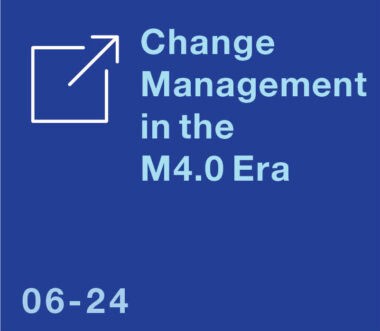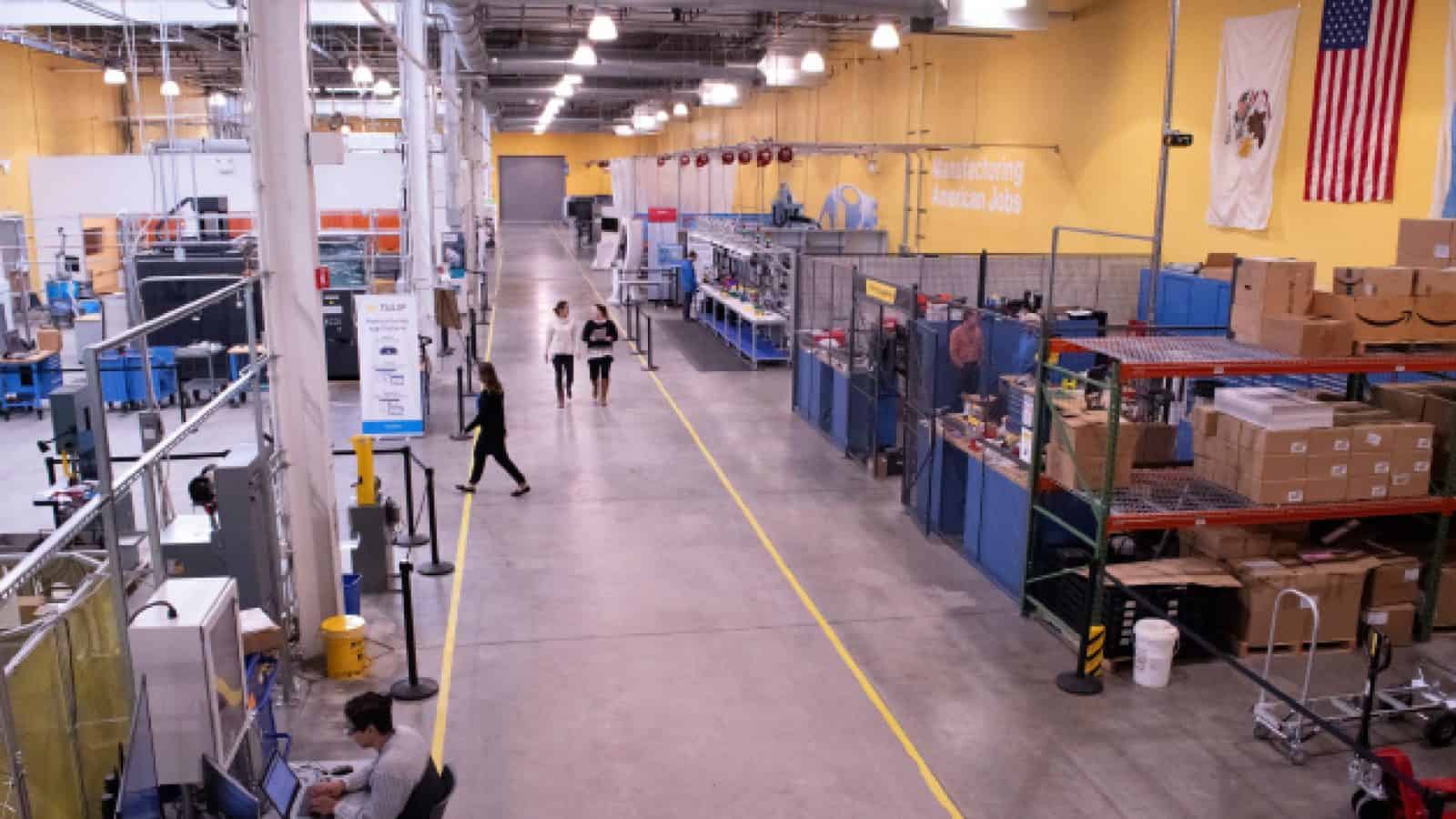Change Management for an Agile, Innovative Workforce

Five foundational areas of focus for an effective change plan

TAKEAWAYS:
● A clear change management plan can help employees and broader teams mitigate change saturation, avoid burnout and adapt most efficiently.
● Businesses need to pay just as much attention to behavioral implications as they do technological implications of change planning and management.
● Successful implementation requires top-down communication and active stakeholder engagement early on to maximize buy-in and stewardship.
Increasingly interconnected operations are spurring the need for broader organizational change management initiatives at many manufacturing companies. As businesses implement more advanced technologies — from robotics and data analytics to Internet of Things devices — it is critical that they also take a strategic approach to change management so their processes and people can adapt in an increasingly technology-driven environment.
A successful change management plan in the Manufacturing 4.0 era requires thinking about how to evolve the technological, people and process aspects of the change, and how those areas harmonize with each other.
While technology is central to so much of the change that manufacturers are experiencing, it does not exist in a vacuum; consumer preferences and markets are evolving, driving changes in what, where and how products are made and sold. Supply chains are shifting, compliance requirements are evolving, and decarbonization is becoming a higher priority.
Constant change and the need to adapt have become the new norm for organizations, and thus a strong change management plan is central to enabling speed to value, efficiency, innovation and resilience. Because a clear organizational change plan is about equipping the business to maximize the value it gets out of the change being implemented, ensuring stakeholder buy-in and a talent impact analysis is also key.
Developing a Plan: Five Core Areas
A common challenge in the realm of change management is employees’ capacity for constant (or near-constant) change. Teams can easily get exhausted or feel a lack of clarity around how best to prioritize. As the adage goes, if everything is critical, then nothing is critical.
“The average employee experienced 10 planned enterprise changes in the past 12 months alone, and they are getting fatigued,” according to Gartner® research published in 2023. “Willingness to support organizational change collapsed from 74% of employees in 2016 to just 43% in 2022, so it is no surprise that change fatigue is HR’s top change management concern for 2023,” Gartner found.
If a technology is increasing the speed of operations, that might seem simple, but it may still be challenging to implement in terms of how it shows up in employees’ daily work.
A clear plan for change management can help employees and broader teams mitigate that change saturation, avoid burnout and understand how to adapt most efficiently.
In its simplest form, an effective change plan has five foundational areas:
- Assessing the baseline: At the beginning of a change management endeavor, manufacturers should determine their baseline change readiness through understanding potential risks, aligning leaders on success criteria, and defining the strategy for deploying the change.
- Stakeholder analysis and communications: Companies need to have a detailed, robust communications plan from the start. This plan conveys how the coming changes will benefit customers, the employees and the company overall and why the business is making such changes. A stakeholder analysis should identify every internal and external role that will be affected by the change — whether employees, customers, vendors or others — and assess the impact on each. This step should address training activities, technologies and other tools people will need to adopt the change.
- Developing a change network: It is important to identify change champions within the business — typically key leaders or influencers — who volunteer to help motivate peers about the plan. This network can help streamline the deployment of communications and training efforts and build broader cultural momentum around the plan. Successful implementation requires not only top-down communication but active stakeholder engagement early on to maximize buy-in and stewardship.
- Conducting an impact analysis: Businesses need to understand the potential process, technology and workflow implications of coming organizational changes. An impact analysis can help map out how those areas might look in the future versus in their current state and identify areas where employees might be asked to go about their work differently. Teams can also use that analysis as a tool in training, measuring the adoption rate and reviewing success criteria.
- Analyzing training needs and delivery strategy: Teams should use factors uncovered during the impact analysis to identify the knowledge and training needs of employees affected by the change, and how best to deliver this training. A virtual role-based curriculum may be a useful way to deliver this training.
In all these foundational areas, businesses need to pay just as much attention to the behavioral implications as they do the technological implications of change planning and management. If a technology is increasing the speed of operations, that might seem simple, but it may still be challenging to implement in terms of how it shows up in employees’ daily work.
To enable individual team members to succeed and become more agile, manufacturers should think strategically about how they envision success and then map that back to specific ways in which employee behaviors may need to change. As part of this effort, leadership teams should address the fear, uncertainty and doubt that typically accompany operational change, and welcome employee perspectives.
Measuring Success
It may seem daunting to figure out how to measure the success of a change management initiative or plan, given how all-encompassing such plans may be. Even though internal change management departments have become more common for many companies in recent decades, working with a third-party advisor who comes into the situation with a neutral viewpoint and broader perspectives can be especially helpful to gauge success and progress.
Leadership teams should address the fear, uncertainty and doubt that typically accompany operational change, and welcome employee perspectives.
A company’s success criteria must consider how workers function in the new environment and whether there is a critical mass of employees who have adapted to the new environment. Implementing a new technology or process on its own will not do much good if it is not integrated in a way that allows employees to use it efficiently and toward broader innovation.
Here are examples of questions that might help companies measure the success of the human components of their change management plan:
- If a new technology was implemented to improve inventory turns, for instance, what does it take from a human perspective to increase those turns?
- What factors are you using to determine whether you have successfully defined new roles?
- How are you measuring whether employees are proficient in new technologies?
The Forward Look
Manufacturers today rely on industrial automation and connected operations in their factories, and they cannot fully take advantage of those capabilities unless the workforce is equipped to navigate the swift pace of multi-faceted change. Companies need to be just as strategic about managing that change as they are about reaching their broader goals. M
GARTNER is a registered trademark and service mark of Gartner, Inc. and/or its affiliates in the U.S. and internationally and is used herein with permission. All rights reserved.
About the authors:

David Carter is a director and industrials senior analyst at RSM US LLP.

Irina Im is a senior manager and industrials senior analyst at RSM Canada.

Tom Kane is a senior director at RSM US LLP.
